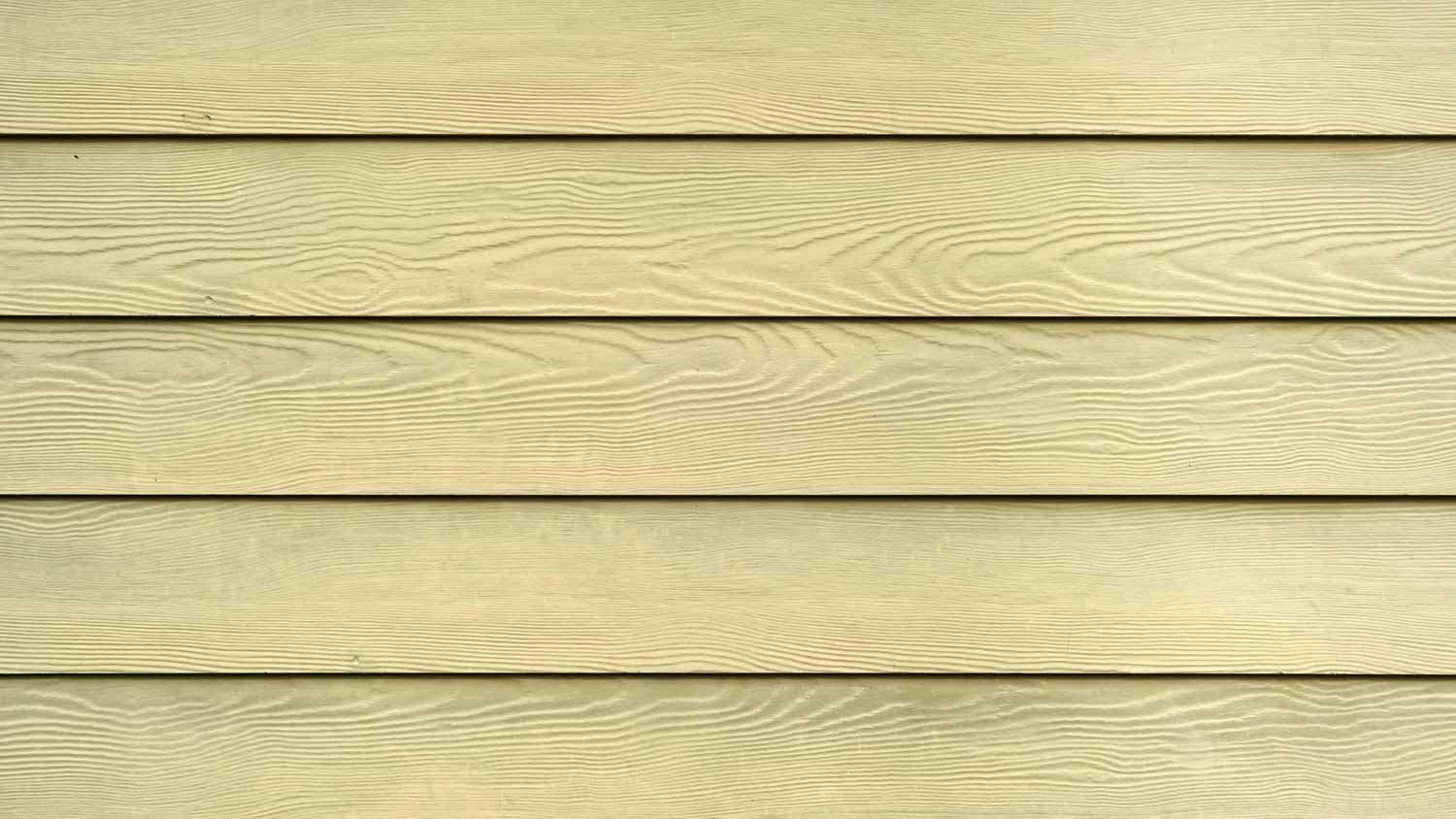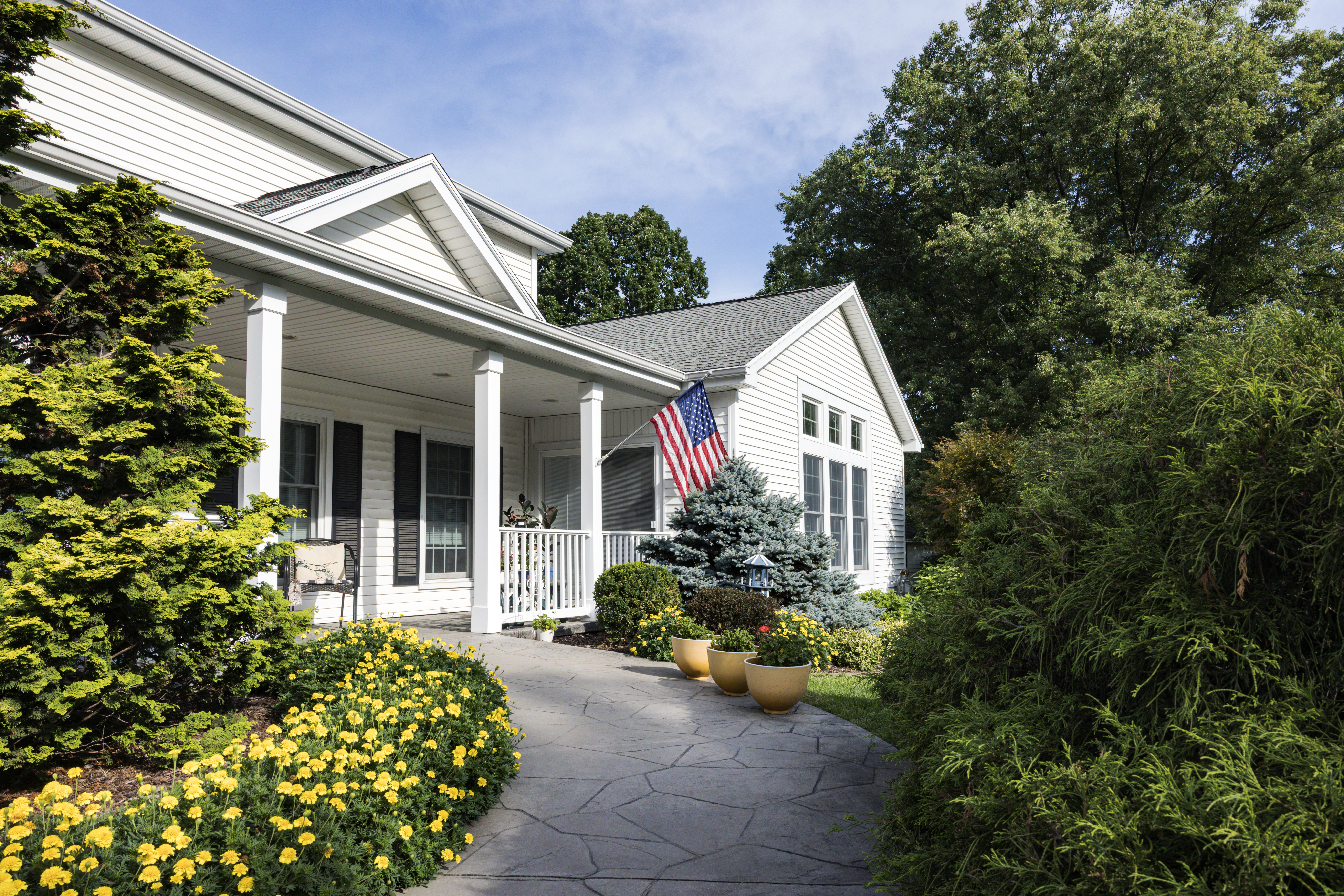
Siding repairs offer much-needed protection against New York's heavy snowfall and harsh winters. Learn about siding repair costs in New York.
This formerly popular material is slowly becoming a thing of the past


Masonite was a popular brand of hardboard, though it is no longer sold under this name.
Hardboard is a low-cost siding option that is ideal for temporary use.
Homes with older Masonite siding may experience rot, pest issues, and buckling.
While Masonite siding rarely makes the list of common types of wood siding these days, the formerly popular trade name still comes up from time to time. But, what is Masonite siding and why has it fallen from grace? Let's explore the background, features, and current costs of this engineered wood option.

Masonite siding—more commonly known as hardboard or pressboard—came about in the 1920s and became one of the first engineered wood sidings on the market. Willian H. Mason heated, highly pressurized, and tempered wood chips into a single board, using linseed and wax to complete the cohesion. This should not be confused with Hardie Board, the brand name for fiber cement siding.
The result was a low-cost alternative to wood siding and eventually vinyl siding that, for a while, was easy to customize and more durable than many options. However, the quality of Masonite deteriorated later in the century and better options came to the market. A major class-action lawsuit in the 90s for issues with rot led to Masonite discontinuing siding in 2001. While you'll no longer find Masonite specifically on the market, hardboard under other brand names sells similar materials.
The cost of engineered wood siding, including what was formerly known as Masonite, ranges from $3 to $7 per square foot. Some hardboard varieties cost as low as $2 per square foot. Hardboard comes in long planks that range between eight and 12 feet. While they are lightweight compared to other engineered wood, their length can make it difficult to install on your own.
Additionally, one of the largest issues with Masonite was water damage and wood rot from poor installation, so it's best not to cut costs if you're unsure about DIYing the job. Be sure to also include costs for removing existing rotted siding boards and making necessary repairs.
Masonite siding certainly has more issues than benefits, but if you do have a hardboard on your home, it may still hold some perks.
| Pros of Masonite Siding | Cons of Masonite Siding |
|---|---|
| Low cost | Prone to water damage |
| Lightweight | Absorbs moisture |
| Easy to manipulate | Buckles under pressure |
| Requires ongoing maintenance |
Masonite hardboard is a low-cost solution compared to other popular options. It is also lightweight and relatively quick to install. Homeowners can also paint hardboard any color they like, unlike alternatives such as vinyl.
Additionally, Masonite is very easy to cut, carry, and transport, making it an ideal option for temporary use in construction sites, backyard projects, and theatre productions. Like all materials, there are ways to maintain wood siding and Masonite to prolong its life.
The significant list of cons is why Masonite is no longer on the market, and why hardboard, in general, is no longer used for siding and other major projects. Hardboards notoriously absorb moisture over time, leading to severe water damage, pests, rot, and even mold within the walls of a home. All of those factors can eventually weaken a structure and cause the hardboard to buckle.
If you currently have a hardboard or Masonite on your home, it's important to keep a close eye on its maintenance needs and invite a local siding contractor to ensure its stability.
If you come across a hardboard as an option for your project, there are a few instances when it could be a great cost-effective option. Large-scale home renovations that call for hard floor coverings or temporary floors often call for materials like Masonite. You can also use a hardboard for temporary structures, such as a work shed or greenhouse during major changes to your landscape.
If you work in the local theatre community, you may also spot Masonite alternatives for sets and workspaces, as these areas do not expose the elements and last a short time.
From average costs to expert advice, get all the answers you need to get your job done.

Siding repairs offer much-needed protection against New York's heavy snowfall and harsh winters. Learn about siding repair costs in New York.

New siding in New York improves a home's aesthetic and provides important insulation and protection against snowfall and rain. Learn about average siding replacement costs throughout New York.

New fiber cement siding improves insulation to lower energy and heating costs. Learn about average fiber cement siding installation costs in New York.

Wondering why your vinyl siding is wavy? Chances are the installation is to blame. But the issue could be sunlight, heat, or foundation issues.

Exterior Insulation and Finish Systems, or EIFS, is a stucco look-a-like but is actually very different. It can be hard to clean and expensive to install, but EIFS is a durable, energy-efficient, and attractive option to spruce up any home.

Learn to identify the warning signs of siding damage like rot, pest infestation, and mold growth, and learn what to do to protect your home’s exterior.